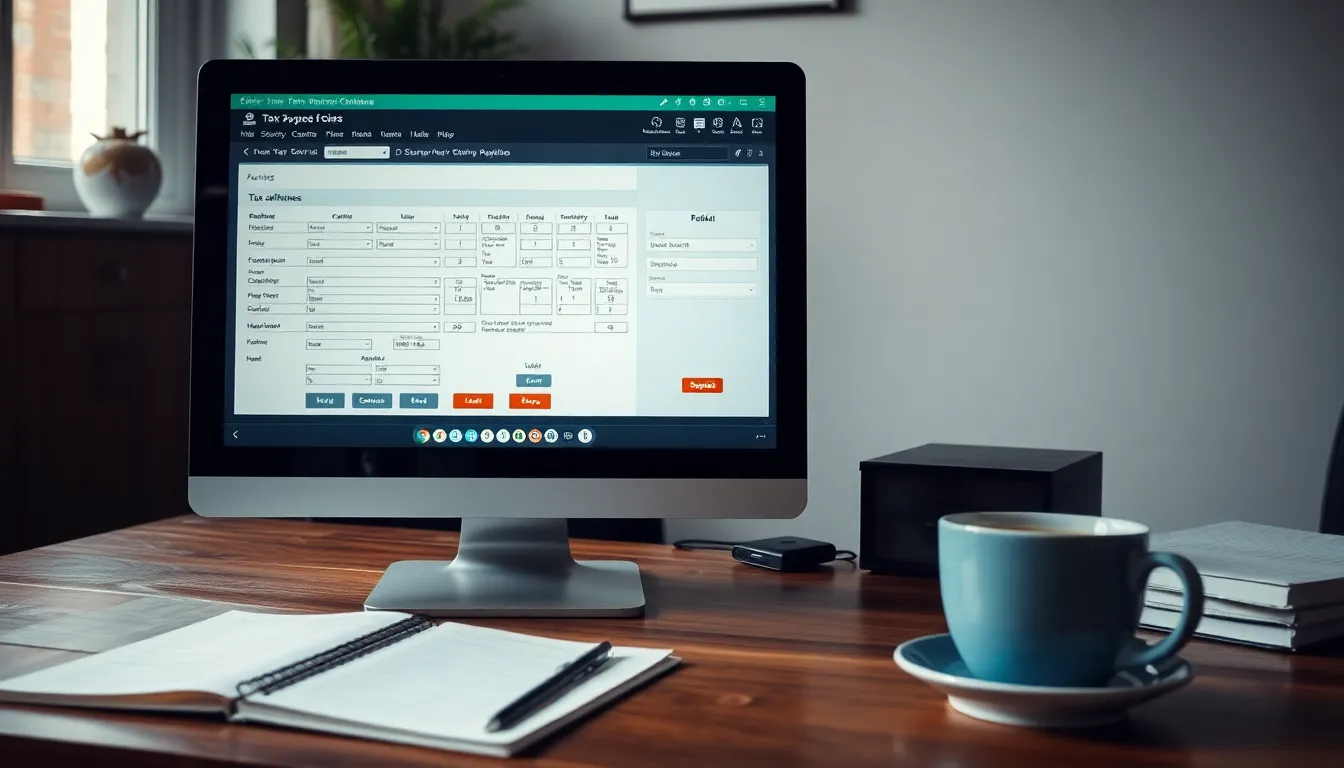Tax season can feel like a horror movie, but it doesn’t have to be. With DIY tax filing, anyone can transform from a tax novice to a savvy number cruncher without breaking a sweat. Imagine sipping coffee in your pajamas while conquering those forms instead of waiting in line at a stuffy office. It’s like a superhero moment—only instead of a cape, you’ve got a comfy blanket.
Table of Contents
ToggleUnderstanding DIY Tax Filing
DIY tax filing refers to the process of preparing and submitting tax forms independently, without hiring a professional tax preparer. Individuals manage their own tax returns, which allows for a more personalized approach.
What Is DIY Tax Filing?
DIY tax filing involves individuals completing their tax returns on their own using various tools and resources. The process includes collecting necessary documents, filling out forms, and submitting them electronically or via mail. Many software options exist, simplifying calculations and ensuring accuracy throughout the process.
Benefits of DIY Tax Filing
DIY tax filing provides several advantages for taxpayers. First, individuals save money by avoiding professional fees. Second, increased knowledge about tax regulations develops as they engage with their financial information. Third, filing from home creates comfort, eliminating the need for appointments. Fourth, flexibility is available, allowing individuals to work on their tax returns at their own pace. Finally, maintaining control over personal and financial data becomes easier with DIY filing.
Tools and Resources for DIY Tax Filing

Many tools and resources simplify the DIY tax filing process. Utilizing the right ones makes filing accurate and less daunting.
Software Options
Tax software provides a user-friendly interface for completing forms. Popular programs like TurboTax, H&R Block, and TaxAct offer various plans based on individual needs. Most users find that these platforms feature step-by-step guidance and automatic calculations. Some options include free versions for straightforward tax situations, while others cater to complex scenarios. Numerous users appreciate the e-filing capabilities, allowing quick submission to the IRS.
Helpful Online Resources
Several online resources enhance the DIY tax filing experience. The IRS website is a primary source for official tax forms, instructions, and critical updates. Websites like National Association of Tax Professionals and Intuit’s Tax Center provide articles and tips for optimizing tax situations. Social media groups and forums offer community support and shared experiences. Many taxpayers also find video tutorials helpful for navigating software. Accessing these resources increases confidence and accuracy during filing.
Steps to Complete Your DIY Tax Filing
Completing DIY tax filing involves specific steps to ensure accuracy and compliance. Each stage plays a crucial role in the overall process.
Gather Necessary Documents
Gathering necessary documents sets the foundation for efficient tax filing. Collect forms such as W-2s, 1099s, and any documentation of deductions like receipts and bank statements. Organizing these papers in advance can streamline the process significantly. Additionally, consider keeping digital copies for easy access. Always verify that all relevant documents are obtained before starting.
Choosing the Right Tax Form
Selecting the right tax form is essential for compliance. The most common options include Form 1040, 1040A, and 1040EZ. Form 1040 accommodates various income sources and deductions, while 1040A suits those with simpler tax situations. 1040EZ is for individuals with basic tax scenarios and no dependents. Knowing which form applies to specific circumstances ensures accuracy and minimizes errors.
Filling Out Your Tax Form
Filling out the tax form requires meticulous attention to detail. Follow the instructions provided for each section carefully. Input personal information, income details, and deductions accurately. Utilize tax software for guidance and error-checking, enhancing confidence in submission. Double-check entries before finalizing and submitting the form, ensuring all calculations are correct. This proactive approach prevents issues down the line.
Common Mistakes to Avoid
Avoiding common mistakes during DIY tax filing can save time and prevent costly errors. Being aware of common pitfalls ensures a smoother experience.
Misreporting Income
Misreporting income occurs when taxpayers overlook or inaccurately report earnings. Various sources of income, including freelance work and investment returns, could be easily neglected. Taxpayers must ensure all supplemental forms like W-2s and 1099s are included. It’s essential to cross-check these documents against reported income to verify accuracy. Additionally, some may forget to report side hustle earnings. Keeping thorough records of all income sources promotes reliable filings.
Missing Deductions and Credits
Missing deductions and credits significantly impacts tax liabilities. Taxpayers often overlook deductions related to student loans, mortgage interest, and medical expenses. Familiarity with available tax credits can lead to considerable savings. Researching education credits or energy-efficient home credits helps maximize benefits. Individuals can benefit by consulting resources or tax software that guide them through relevant deductions. Each deduction or credit claimed can substantially reduce the total tax owed, making careful review essential.
DIY tax filing can transform a daunting task into a manageable and even enjoyable experience. By leveraging the right tools and resources, individuals can take control of their finances while saving money. Embracing the process not only builds confidence but also enhances understanding of tax regulations.
With careful organization and attention to detail, anyone can navigate the complexities of tax forms. Avoiding common pitfalls ensures a smoother filing experience and maximizes potential savings. As tax season approaches, embracing the DIY approach might just turn what once felt like a horror movie into a rewarding adventure.
